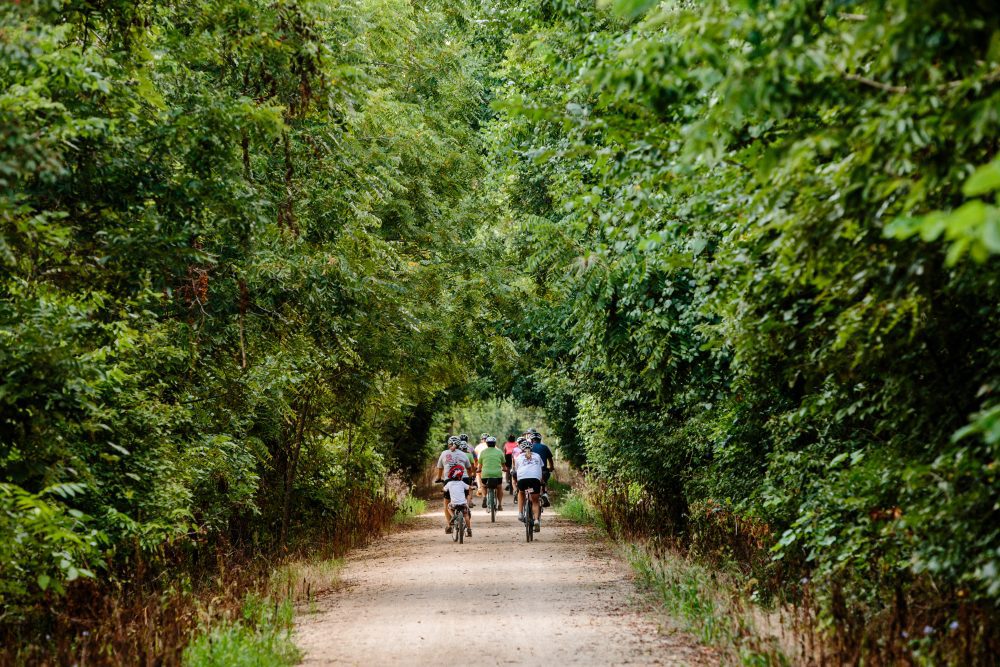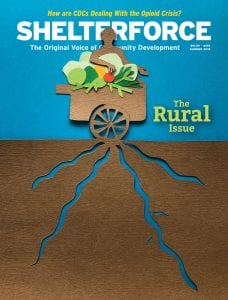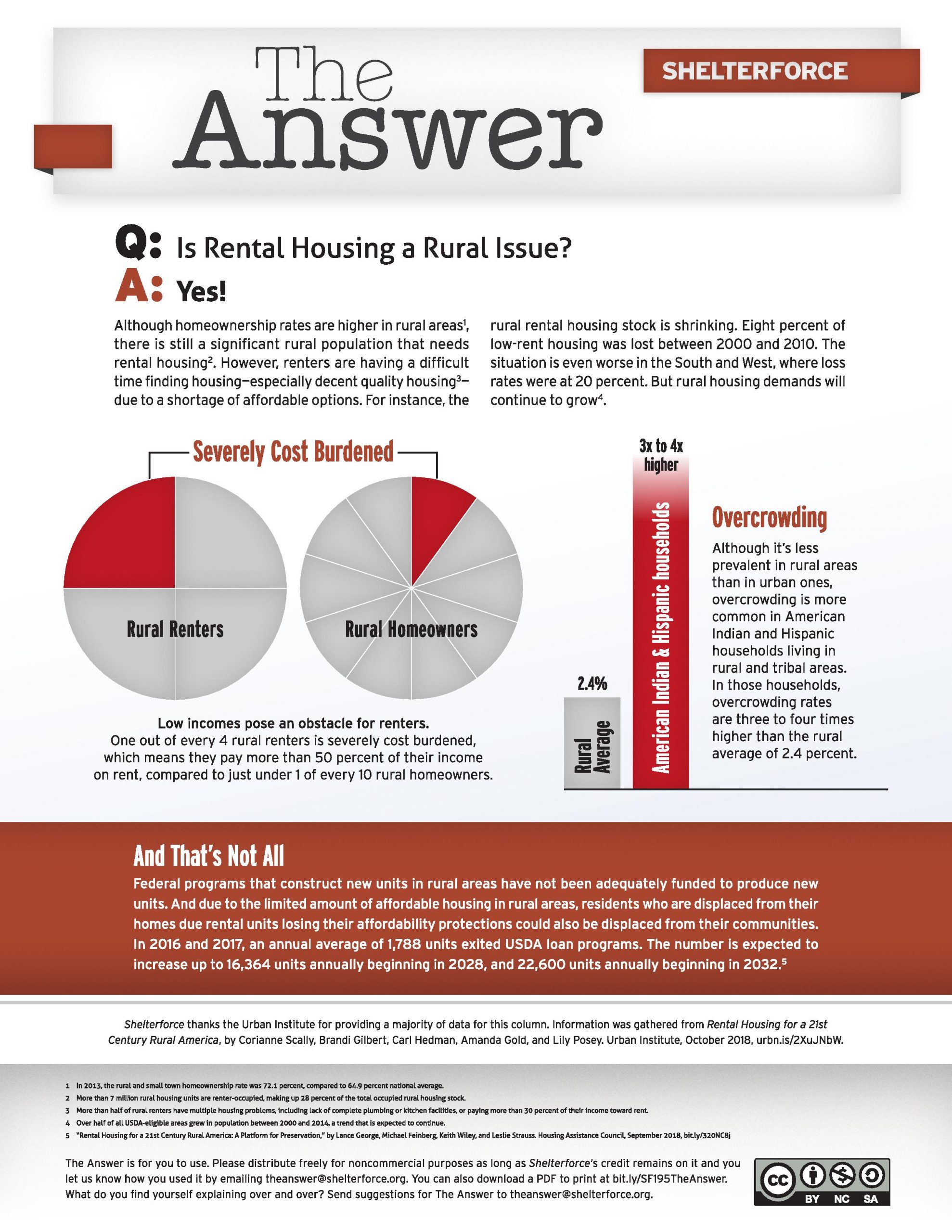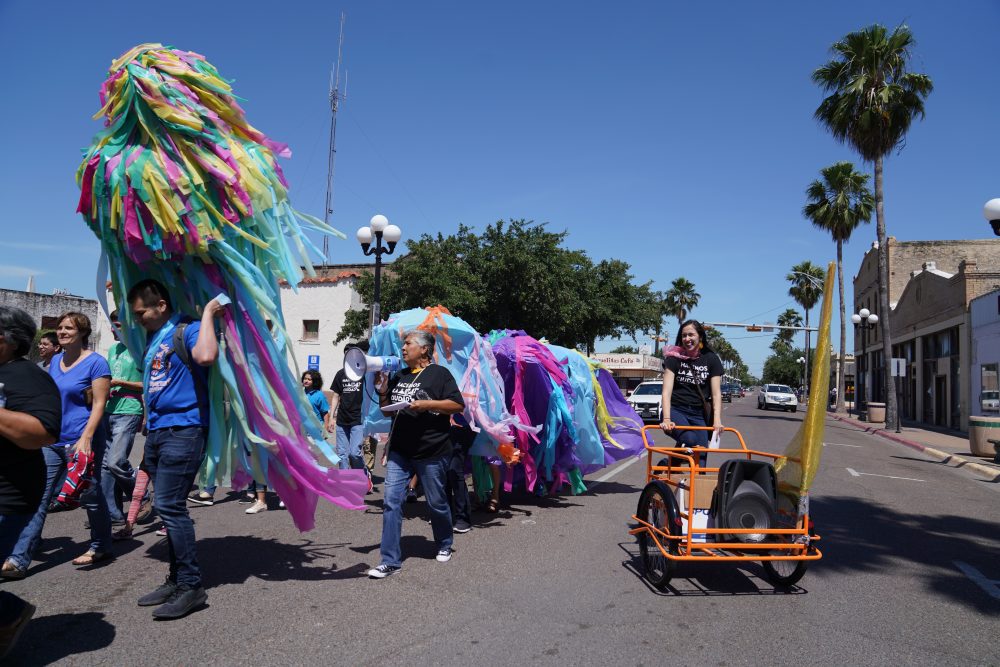Several years ago, I moderated the closing panel for a Federal Reserve event on rural housing. It was a fascinating event. While much of what was discussed sounded familiar to me from spending time in the larger affordable housing world, much also did not. I was pushed, for example, to think about the different ways poverty manifests in a rural resort area versus an agricultural area, and reminded of the different ways that USDA approaches housing assistance as compared to HUD.
Like any other institution, Shelterforce has had its comfort zones, and we’ve largely stayed within them. We were started by tenant organizers in New Jersey cities in the 1970s, and the familiarity with and tendency to focus on the urban areas of our founders continued as we grew. It was never formal, and never total. We have had many articles over the years about organizations working in rural areas, issues of particular relevance to rural areas (such as manufactured housing), and even some commentary about rural-specific programs and perspectives from partners like the Housing Assistance Council and Hope Enterprise Corporation.
Nonetheless, our default frame of reference has tended to be urban areas (“cities” or “metros”), with a feeling that rural was a baffling “other thing” that we didn’t really understand. I think we’re not alone. I’m reminded of the time, a few years ago, when I spoke to Catherine Tumber, author of Small, Gritty, and Green. In my review of her book I noted, “She told me that while she finds her chapter on the potential for agricultural areas around small cities [to be integrated] as part of their regional economy much more important and interesting than the one on actual urban agriculture, the latter is often all anyone wants to talk to her about.”
It’s true that rural areas have different needs, contexts, and challenges. But so do hot-market and Rust Belt cities, central cities and inner-ring suburbs, massive cities and smaller ones, and we consider all of them within our usual purview. It was time to shift our thinking so rural areas were more clearly part of the fold, and we decided that a focus issue would be a good way to do that.
And the rural community development world was there for us. As we started to reach out and learn and invite people to contribute, we got an incredibly enthusiastic and supportive response. We never start out as experts—we are always learning from all of our readers who are doing the work on the ground, and this was no exception.
Importantly, of course, while there are differences, there are also many similarities between rural and urban community development work of different kinds, and much that we can learn from becoming more familiar with what’s being done, and needs to be done. We’re excited to share this collection of articles with you over the next couple of months at shelterforce.org/tag/rural. (You’ll be able to read these articles and more now if you’re a subscriber, or if you purchase the latest issue.)
Two regional CDFI leaders, Bill Bynum of HOPE Enterprise Corporation, working in the Mississippi Delta, and Jim King of Fahe, working in Appalachia, gave us a great run-down of myths about rural areas in our interview with them.
Do you think of rental housing as being a major issue in rural areas? It is. Did you know that CRA investments rarely reach rural areas, and how CRA reform might fix that? Or that the community land trust model might be adapted to finance agricultural land for aspiring farmers? The USDA’s Self-Help Housing program has a particular take on sweat equity that everyone might want to learn from. Manufactured homeowners are still struggling, despite the GSE’s added “duty to serve” them, but resident-owned cooperatives continue to gain ground.
In the latest issue we’ll also introduce you to rural arts and culture projects, and some stories about how community development organizations are addressing the opioid crisis (which is by no means only a rural issue, but is certainly hitting rural areas hard).
As always, we’d like to hear what you learned, what you’d like to see, and examples you think we should know about. Have rural and urban parts of your areas figured out how to work cooperatively together?






Comments